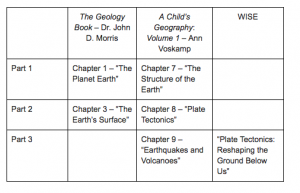I explored and customized the WISE project Solar Radiation and Solar Ovens. This is a retrospective activity for me, because our class did a Solar Thermal Heating project this year that is the same concept, with a different use case. I wish I had known about the WISE project data base—the interactives make excellent use of simulations, visualizations, and feedback! I customized the WISE project to fit our Solar Thermal Heating unit. We used a constructivist approach.
We started by watching a short video of a Navajo girl who grew up with her grandparent off the grid in rural Arizona. They use wood for heating in the winter and as an engineering student, she wanted to do something to help her family so she designed, built, and installed a passive solar thermal unit on their adobe house. The kids found it really inspiring, and strongly connected with the real-world application of science, which is highly motivating (Fernades, 2014). The girls in the class also thought it was pretty cool that the girl in the video was an engineering rock star. Our goal to build a solar thermal unit was clear, and the students were all pretty certain that they were up to the task. Hattie (2007) suggests that this is key to reducing the gap in affective processes, like effort and engagement.
In small groups, students shared what they thought engineering was as a career. Later in the week, a City of Vancouver engineer gave us a tour of the solar thermal heating units at the local swimming pool. He also told them about his career as an engineer. Students wrote a reflective paragraph on their perception of engineering as a career. Although I did not see this at the time, this is one example of Scaffolded Knowledge Integration in action. Many of the WISE project slides mirror what we did, but in a much slicker way. In groups of three, students researched, designed, presented, and built solar thermal units. This makes thinking visible, makes science accessible, and helps students learn from one another; three of the four tenets of Linn et al (2003). Team members agreed on group roles and responsibilities. They were responsible for designing a test for the units and there were many misconceptions about the difference between heat and temperature. At this point, and many others, the instructors (including myself) were responsible for providing cognitive feedback cues (Hattie, 2007) that addressed the faulty interpretations. Eventually, they collaboratively chose to measure the temperature difference between intake and outtake air. Once the basic units had been tested, they went back to the books to see if they could design additional efficiencies. Some chose to silver the outside (for radiation losses), other teams built reflecting “wings” to capture more incident radiation. One group installed a fan to increase the flow of air through the unit. This “Beta Model” iteration design is key for students to learn to critique, compare, revise, and rethink (Linn et al, 2003).
Fernandes, S., Mesquita, D., Flores, M. A., & Lima, R. M. (2014). Engaging students in learning: findings from a study of project-led education. European Journal of Engineering Education, 39(1), 55-67.
Hattie, H. & Timperly, H. (2007). The power of feedback. Review of Educational Research, 77(1), 81-112.
Linn, M., Clark, D., & Slotta, J. (2003). Wise design for knowledge integration. Science Education, 87(4), 517-538.
